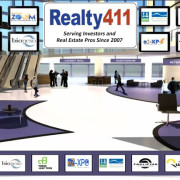What Makes Housing “Affordable”?
By Kristen Uitto
Providing affordable housing options to families remains a high priority among government and business leaders, especially as the cost to own an average size home continues to rise. Being able to provide affordable housing options to people boils down to planning, design and construction costs, all of which can be reasonably addressed and resolved with a well-planned approach. And as more communities and towns look for ways to help their citizens afford a place to live, there are some smart ways to save on costs while designing and building residences that people will be proud to call “home”.
80/20 Rule
Eighty percent of an affordable housing development can be standardized, meaning that the individual units adapt a repeatable design to save on planning and construction costs. With these savings, more money can be spent on the remaining 20 percent of the development which includes amenities, entry ways, lobbies, courtyards, and many of the common areas that enhance the quality and appearance of the development. The remaining 20 percent is where the magic happens from a design and construction perspective and can truly elevate the appeal of a development.
article continues after advertisement
Efficient Design and Construction
By designing efficient and repeatable floorplans for individual units, an affordable housing development can save money, avoid problems during construction and shorten the learning curve for future developments. This streamlined approach to design should also take into account the types of materials being used for the construction of the development. Durable materials and a simple palette will contribute to a more favorable bottom line. These types of materials include brick, metal siding, fiber cement siding such as Hardie Board, all of which are cost efficient, easily constructable, easy to maintain and reuse and fire resistant for overall safety. The construction industry also provides efficient ideas such as prefabricated and modular construction solutions.
Smart Site Selection
Finding the best site to build on is a critical first step in developing and building an affordable housing community. Doing so will help to avoid delays and costs associated with the entitlement process. For example, the land should have ready access to existing municipal services so nothing new needs to be installed or accounted for (urban infill sites are ideal for this requirement). The land itself should have a level topography (no sloping) to avoid unnecessary design and construction challenges. It should also have good, clean soil (without any brownfield contamination that would need to be excavated and hauled away). Proper drainage is also key to avoid costly issues with ground water and flooding.
article continues after advertisement
Proper Scale
An affordable housing development can more easily attain its goals (in terms of development, design and construction costs, as well as the pricing of homes) with larger projects providing in the range of80-120 units. Projects can achieve economies of scale by increasing production efficiently and spreading the costs over a larger number of repeatable units. Also, a good site can also yield better results when less of the budget needs to be spent on horizontal construction, such as utilities, site access, and grading.
Creative Funding Sources
As the affordable housing crisis continues to be a focal point, more funding sources and support are becoming available, but it does take effort and time to identify and secure them. Some of the readily available sources include federal tax credits, State programs, local level programs and grants. Most affordable housing projects we’re involved with are funded by multiple sources including some private investors.
Overcoming Obstacles
Unfortunately, there is still some NIMBY pushback to affordable housing development. There are also examples of residential developers, often targeted as entities only interested in making-a-buck, who want to include quality affordable housing options in their overall development plan but are stalled due to public resentment and barriers to getting projects approved. In our experience, robust community engagement and outreach can make the difference in a project that gets built and one that fails.
With increased costs and higher interest rates, stagnant salaries and weaker earning power within family units, and inflation affecting everyone’s budgets, affordable housing is an ever-growing need in modern society. It is a need that must be addressed by identifying the most efficient ways to develop, design and build housing that people can afford. A “we’re all in this together” mindset by all stakeholders is necessary to bring more housing to fruition.
Kristen Uitto , Principal Architect, Caddis Collaborative
Architecture, Urban Design and Planning


















